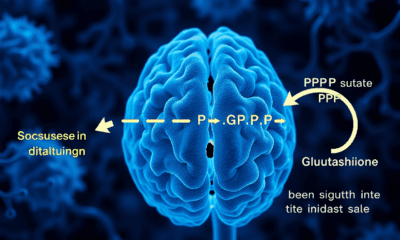While we try to keep things accurate, this content is part of an ongoing experiment and may not always be reliable.
Please double-check important details — we’re not responsible for how the information is used.
Earth & Climate
Retiring Abroad Can Be Lonely Business
Many people dream of retiring to a warmer, less expensive country. But retirees who move abroad may be at greater risk of loneliness than those who stay in their home country, according to new research.

Allergy
The Hidden Dangers of Fire Smoke Exposure
Smoke from wildfires and structural fires doesn t just irritate lungs it actually changes your immune system. Harvard scientists found that even healthy people exposed to smoke showed signs of immune system activation, genetic changes tied to allergies, and even toxic metals inside their immune cells.
Atmosphere
Uncovering the Hidden Link: NASA Discovers Connection Between Earth’s Core and Life-Sustaining Oxygen
For over half a billion years, Earth’s magnetic field has risen and fallen in sync with oxygen levels in the atmosphere, and scientists are finally uncovering why. A NASA-led study reveals a striking link between deep-Earth processes and life at the surface, suggesting that the planet’s churning molten interior could be subtly shaping the conditions for life. By comparing ancient magnetic records with atmospheric data, researchers found that these two seemingly unrelated phenomena have danced together since the Cambrian explosion, when complex life first bloomed. This tantalizing connection hints at a single, hidden mechanism — perhaps even continental drift — orchestrating both magnetic strength and the air we breathe.
Earth & Climate
A Giant Pulse Beneath Africa: How a Mantle Plume is Shaping the Continent
Beneath the Afar region in Ethiopia, scientists have discovered pulsing waves of molten rock rising from deep within the Earth — a geological heartbeat that could eventually split Africa in two. These rhythmic surges of mantle material are helping to stretch and thin the continent’s crust, setting the stage for a new ocean to form in millions of years. The pulses aren’t random: they follow patterns shaped by the tectonic plates above, behaving differently depending on how thick the plates are and how fast they’re spreading.
-

 Detectors3 months ago
Detectors3 months agoA New Horizon for Vision: How Gold Nanoparticles May Restore People’s Sight
-

 Cancer3 months ago
Cancer3 months agoRevolutionizing Quantum Communication: Direct Connections Between Multiple Processors
-

 Agriculture and Food3 months ago
Agriculture and Food3 months ago“A Sustainable Solution: Researchers Create Hybrid Cheese with 25% Pea Protein”
-

 Diseases and Conditions4 months ago
Diseases and Conditions4 months agoReducing Falls Among Elderly Women with Polypharmacy through Exercise Intervention
-

 Chemistry3 months ago
Chemistry3 months ago“Unveiling Hidden Patterns: A New Twist on Interference Phenomena”
-

 Albert Einstein4 months ago
Albert Einstein4 months agoHarnessing Water Waves: A Breakthrough in Controlling Floating Objects
-

 Earth & Climate3 months ago
Earth & Climate3 months agoHousehold Electricity Three Times More Expensive Than Upcoming ‘Eco-Friendly’ Aviation E-Fuels, Study Reveals
-

 Alzheimer's Research3 months ago
Alzheimer's Research3 months agoUnlocking the Secrets of Cell Behavior: New Pathways Discovered for Drugs to Act on Cells






























